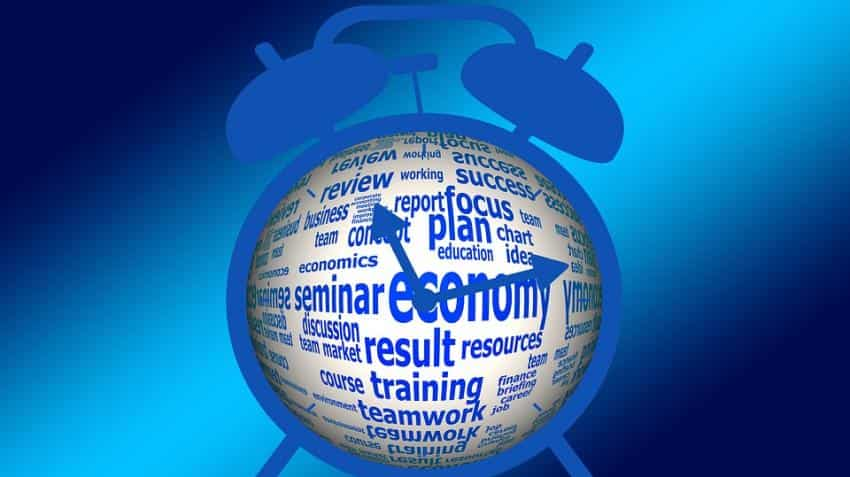How will Modi's economic stimulus impact Indian economy?
India's gross domestic product dropped to a three-year low at 5.7% in three months ended June 2017. India's fiscal deficit at the end of March 31, 2017 stood at 3.5%.

Prime Minister Narendra Modi is likely to unveil economic stimulus measures today.
On Friday, sources close to Ministry of Finance said that the government may look to infuse anywhere between Rs 40,000 to Rs 50,000 crore in the Indian economy over the coming months in order to give it a much needed push.
India's gross domestic product dropped to a three-year low at 5.7% in three months ended June 2017. India's fiscal deficit at the end of March 31, 2017 stood at 3.5%.
However, economists are expecting up to Rs 80,000 crore of push.
Madan Sabnavis, Chief Economist at Care Ratings had said, "50 bps increase in fiscal deficit i.e. from 3.2 to 3.7% will involve around Rs 80,000 crore which will help. But for accelerated growth we need private investment to step up, which will come only with a lag."
DBS, in a research report dated September 20, said that with key growth drivers – consumption, investment growth, and government spending – set to moderate in rest of this year, the bounce in activities after the implementation of goods-and-services tax (GST) might underwhelm.
"This is likely to feed calls for policy support through a higher fiscal deficit, accommodative policy stance, and a competitive INR. Unfortunately, the room to provide additional stimulus on all these fronts is limited," it said.
In the first half of FY17, slowing investment demand weighed on growth, but the impact was mitigated by higher consumption, government expenditure and a supportive trade sector.

But, this uptrend was, however, derailed by demonetisation.
Apart from hurting rural consumption, the cash squeeze affected other cash-sensitive sectors such as construction, trade, logistics and small/medium sized enterprises. Subdued demand also aggravated the existing weak spell in manufacturing and capital formation, pushing down 2H FY17 growth to 6.5% YoY from 7.7% in H1, DBS report said.
Radhika Rao, Economist at DBS Bank, in a research report said that adopting stimulus option for quick-fixes are a threat to near-term macro-stability and carry long-term implications.
"A case in point was strong fiscal and monetary policy stimulus undertaken in the wake of the 2008-09 global financial crisis (admittedly the urgency was much higher at that juncture), which initially shored up India’s growth through higher consumption and investment spending, only to result in double-digit inflation and wide domestic/external imbalances thereafter," Rao said.
Also, Rao said that structural changes (GST, bankruptcy laws, moves to limit corruption, etc.) will inflict pain in the short term but, if implemented efficiently, will lift potential growth in the medium term.
ALSO READ:
Get Latest Business News, Stock Market Updates and Videos; Check your tax outgo through Income Tax Calculator and save money through our Personal Finance coverage. Check Business Breaking News Live on Zee Business Twitter and Facebook. Subscribe on YouTube.
RECOMMENDED STORIES

IPL Auction 2025 Free Live Streaming: When and where to watch Indian Premier League 2025 mega auction live online, on TV, Mobile Apps, and Laptop?

SIP vs PPF: How much corpus you can build in 15 years by investing Rs 1.5 lakh per year? Understand through calculations

SBI Senior Citizen Latest FD Rates: What senior citizens can get on Rs 7 lakh, Rs 14 lakh, and Rs 21 lakh investments in Amrit Vrishti, 1-, 3-, and 5-year fixed deposits
03:50 PM IST








 India's GDP growth to pick up in third quarter compared to first half of FY25: ICRA report
India's GDP growth to pick up in third quarter compared to first half of FY25: ICRA report GST collection grows 9% to Rs 1.87 lakh crore in October
GST collection grows 9% to Rs 1.87 lakh crore in October IMF says India's GDP growth to moderate to 7% in 2024 and 6.5% in 2025
IMF says India's GDP growth to moderate to 7% in 2024 and 6.5% in 2025  India poised to be third largest global economy by 2030, rising population presents challenges: S&P
India poised to be third largest global economy by 2030, rising population presents challenges: S&P  Global fund investments in India will accelerate in future: Analysts
Global fund investments in India will accelerate in future: Analysts